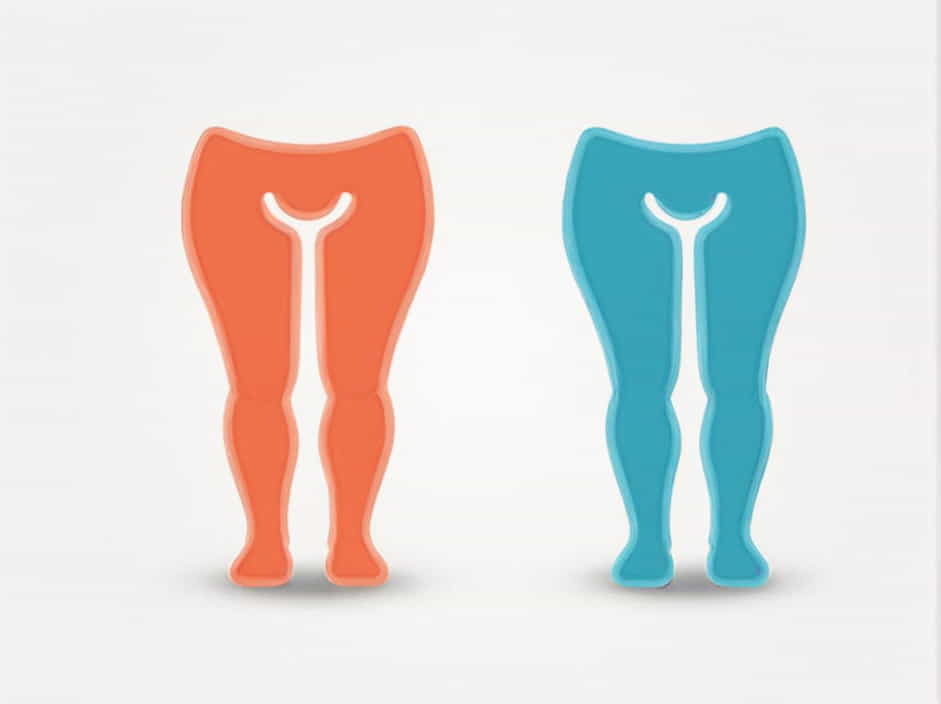The human pelvis is a vital structure that supports the body’s weight, protects internal organs, and enables movement. While both male and female pelvises share the same basic components, there are key differences in size, shape, and function. These differences are mainly due to biological and reproductive needs, with the female pelvis adapted for childbirth and the male pelvis optimized for stability and movement.
Understanding the differences between the male and female pelvis is essential for fields such as medicine, anthropology, and forensic science. This topic explores these variations in detail, including bone structure, angles, and functions.
Basic Anatomy of the Human Pelvis
The pelvis is a ring-like bony structure located at the base of the spine. It consists of three main bones:
- Ilium – The largest and most superior part of the pelvis.
- Ischium – Forms the lower and posterior portion of the pelvis.
- Pubis – The anterior portion that forms the pubic symphysis.
The pelvis also includes important structures such as the sacroiliac joints, acetabulum (hip socket), and pelvic inlet and outlet.
Key Differences Between Male and Female Pelvis
The structural differences between male and female pelvises serve different functions, particularly in relation to reproduction, mobility, and support.
1. Size and Shape of the Pelvis
-
Male Pelvis:
- Narrower and taller
- More robust and heavier
- Heart-shaped pelvic inlet
- Smaller pelvic outlet
-
Female Pelvis:
- Wider and shorter
- Lighter and less dense
- Oval or circular pelvic inlet
- Larger pelvic outlet to accommodate childbirth
2. Pelvic Inlet and Outlet
-
Male Pelvis:
- Smaller, heart-shaped inlet
- Narrower pelvic outlet, which makes the birth canal smaller
- Thicker bones for additional support
-
Female Pelvis:
- Wider, rounder inlet for childbirth
- Larger outlet, allowing the baby to pass through during delivery
- More flexible ligaments for expansion during labor
3. Pubic Arch Angle
-
Male Pelvis:
- Narrow pubic arch (50°-60°)
- Forms a V-shape
-
Female Pelvis:
- Wider pubic arch (80°-90°)
- Forms a U-shape, providing more space for childbirth
4. Sacrum and Coccyx Differences
-
Male Pelvis:
- Sacrum is longer, narrower, and curved forward
- Coccyx (tailbone) is less flexible and points forward
-
Female Pelvis:
- Sacrum is shorter, wider, and less curved
- Coccyx is more flexible and points slightly backward, aiding childbirth
5. Acetabulum (Hip Socket) Position
-
Male Pelvis:
- Larger and deeper acetabulum
- Positioned closer together, providing more stability
-
Female Pelvis:
- Smaller and shallower acetabulum
- Positioned farther apart, allowing for wider hip movement
6. Obturator Foramen (Pelvic Openings for Nerves and Blood Vessels)
-
Male Pelvis:
- Oval-shaped obturator foramen
- Smaller relative to body size
-
Female Pelvis:
- More triangular obturator foramen
- Larger to accommodate pregnancy-related circulatory changes
Why These Differences Exist: Function and Purpose
The variations in male and female pelvises are primarily due to biological and evolutionary factors.
1. Childbirth Adaptation in Females
- A wider pelvis allows for the growth and delivery of a baby.
- The more flexible coccyx helps expand the birth canal during labor.
- The larger pelvic inlet and outlet provide sufficient space for the fetus to pass through.
2. Strength and Stability in Males
- A narrower pelvis provides greater force transmission for physical activities.
- The deeper acetabulum ensures stronger hip joints for running and lifting.
- A longer sacrum contributes to better posture and balance.
Implications in Medicine and Science
Understanding pelvic differences is crucial in several fields:
1. Forensic Anthropology and Identification
- Pelvic bones help determine sex in human skeletal remains.
- The shape of the pelvic inlet and pubic arch are key indicators.
2. Obstetrics and Gynecology
- Doctors assess pelvic shape and size to predict potential childbirth complications.
- Certain pelvic structures may influence cesarean delivery rates.
3. Orthopedics and Rehabilitation
- Pelvic alignment and stability affect posture, back pain, and joint issues.
- Physical therapy considers pelvic shape when addressing movement-related injuries.
Common Pelvic Conditions and Differences in Males and Females
1. Pelvic Fractures
- More common in males due to high-impact sports and trauma.
- In females, fractures can occur due to osteoporosis or pregnancy-related stress.
2. Pelvic Floor Disorders
- More common in females due to pregnancy, childbirth, and hormonal changes.
- Includes conditions like pelvic organ prolapse and urinary incontinence.
3. Hip Osteoarthritis
- Affects both sexes but is more common in women due to wider hip structure.
- Differences in acetabulum positioning may contribute to joint wear and tear.
How to Maintain Pelvic Health
1. Strengthen Pelvic Muscles
- Kegel exercises improve pelvic floor strength, especially in women.
- Hip and core strengthening can enhance pelvic stability for both men and women.
2. Maintain a Healthy Weight
- Excess weight puts stress on pelvic joints and increases the risk of osteoarthritis.
3. Improve Posture and Flexibility
- Stretching and yoga can reduce pelvic pain and stiffness.
- Proper posture helps prevent lower back and hip strain.
4. Seek Medical Help for Pain or Dysfunction
- Chronic pelvic pain, hip pain, or urinary issues may indicate an underlying condition.
- Early diagnosis and treatment can prevent complications.
The male and female pelvis differ significantly in shape, structure, and function, with the female pelvis adapted for childbirth and the male pelvis designed for strength and movement. These differences have biological, medical, and forensic implications, influencing areas such as obstetrics, orthopedics, and anthropology.
By understanding pelvic anatomy and function, individuals can better maintain pelvic health, prevent injuries, and address potential medical conditions. Whether for everyday mobility, athletic performance, or childbirth, the human pelvis plays a critical role in supporting the body’s structure and function.
